International Day of the liberation of prisoners of fascist concentration camps
On this day, the desperate, exhausted Buchenwald prisoners revolted, taking advantage of the fact that in those days a large group of prisoners were taken out of Buchenwald, and a large part of the guards left for accompanying them. At the sign of the camp bell, thousands of people rushed to the guard. The prisoners were taken from the guards weapon, shot at the towers, broke through passages in the barriers. Buchenwald rebelled and won. Two days later, American troops entered the liberated camp.
Of stories uprising
In the 1937 year, when the Third Reich was already actively preparing for wars of conquest, the Nazi leadership, following the creation of the first Dachau concentration camp (founded in 1933), began building other concentration camps, including Buchenwald. The Nazis created a huge network of such camps, turned into places organized by the systematic murder of millions of people. In total, more than 14 thousand concentration camps, ghettos and prisons operated in Germany and the countries occupied by it. During the years of the Second World War, more than 20 million people from 30 countries of the world passed through the death camps, of whom 5 million were citizens of the Soviet Union. Approximately 12 million people never survived until liberation.
The first prisoners of Buchenwald were German anti-fascists. Already in 1937-1939. German anti-fascists form underground groups. After the death of his comrades, Walter Bartel will be the chairman of the underground International Camp Committee until the day of the release of Buchenwald. After the start of aggression in Europe, anti-fascists from various European countries occupied by the Nazis were imprisoned in Buchenwald. In September, 1941 brought the first batch of officers and political workers of the Red Army to Buchenwald. 300 prisoners were shot in a dash at the factory. About 25 of thousands of Soviet people entered the concentration camp gate, and only 5 of thousands of people survived. In total, about a quarter of a million prisoners from all European countries passed through the camp, 56 thousand people martyred in Buchenwald.
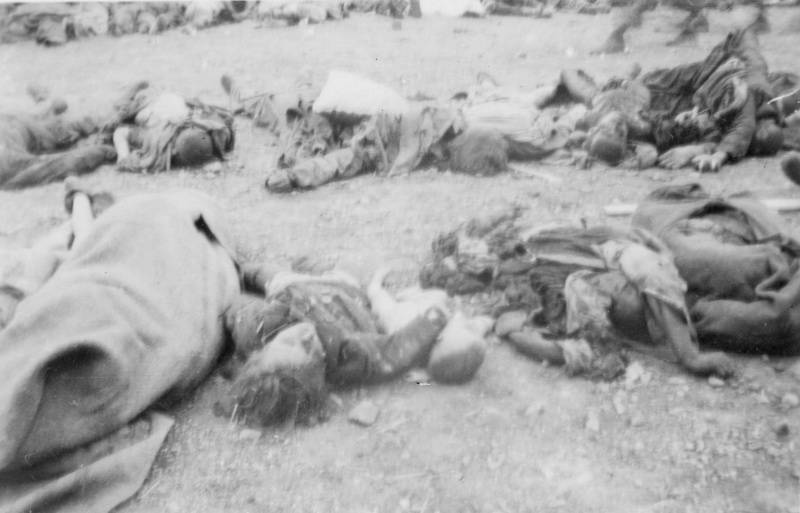
Bodies of prisoners, including children killed in the Buchenwald concentration camp
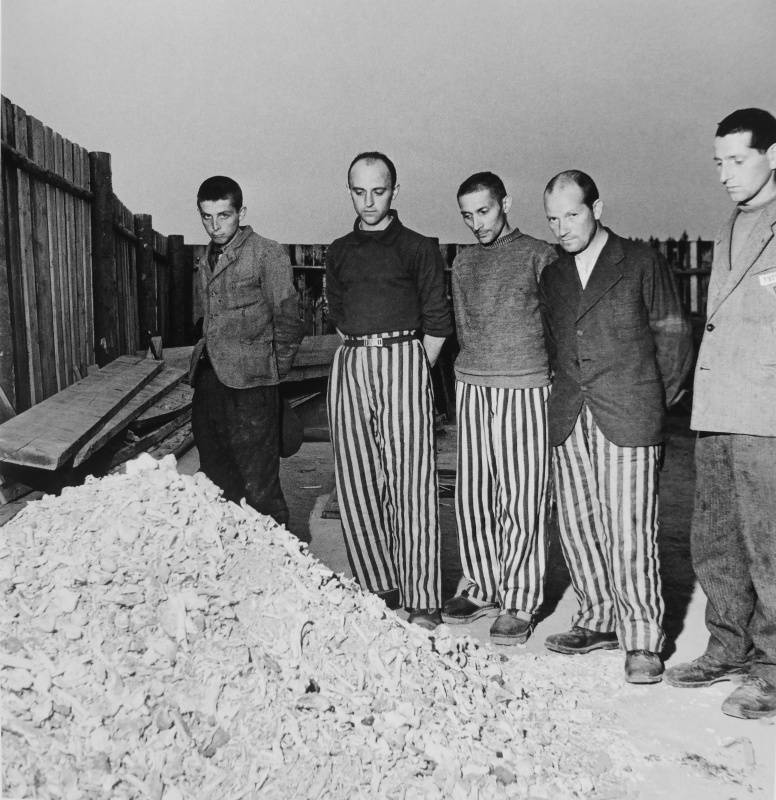
Prisoners of the Buchenwald concentration camp near a pile of charred human bones
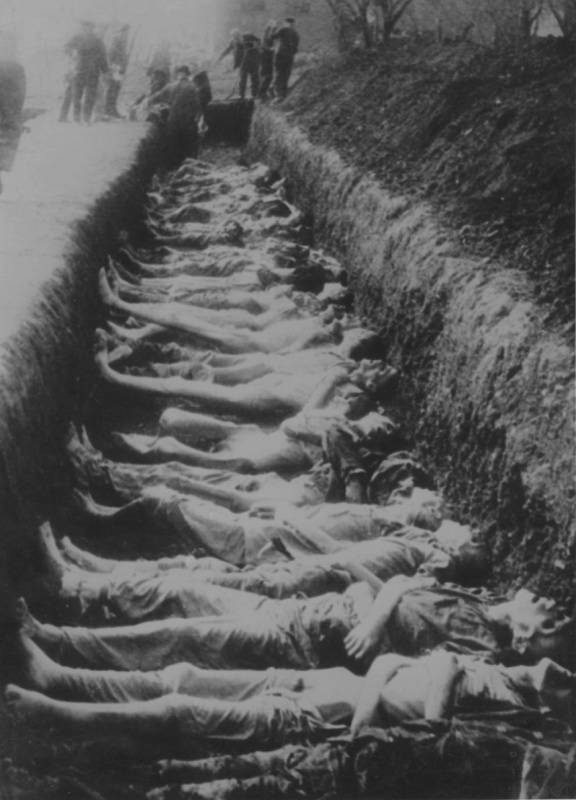
The bodies of prisoners of the Buchenwald concentration camp in the grave before the funeral
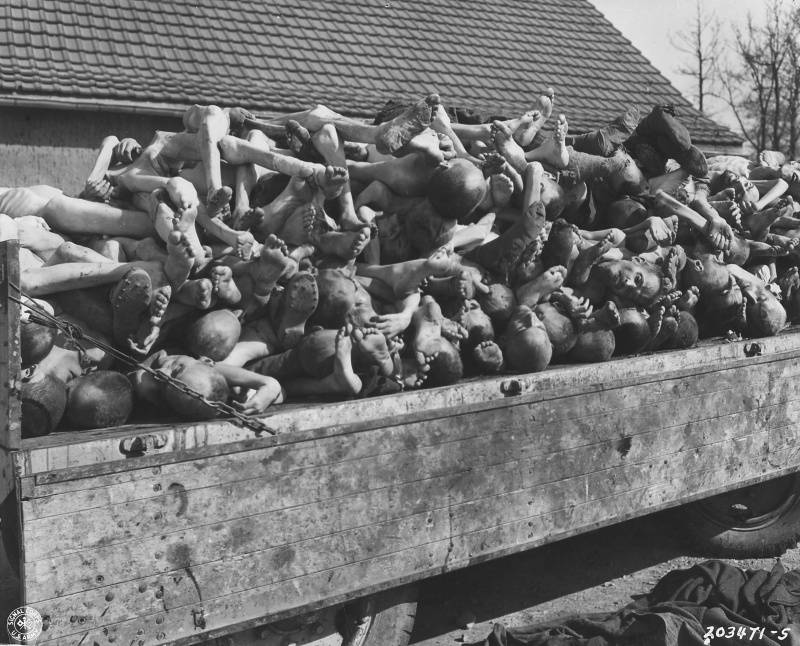
The corpses of prisoners of the Buchenwald concentration camp, prepared for burning in the crematorium, in the back of a trailer
In October, 1941 from the Stalag No. 310 (near Rostock) by rail to Weimar, and then on foot to Buchenwald drove the 2 to thousands of Soviet prisoners of war. The Stalaglah (from short. German Stammlager, main camp) in Germany called Wehrmacht concentration camps for ordinary prisoners of war. For them, they built a special camp - a camp in the Big Camp. Mortality in it was huge, about six thousand people died in six months. In 1942-1944 New batches of Soviet prisoners were brought to the camp. From the second half of 1942, Soviet citizens who were forcibly removed from the territory of the USSR were brought to the concentration camp. During their stay in the Third Reich, they committed "crimes" - they tried to escape, conducted anti-Hitler propaganda, resisted, did not work, etc. For this they were imprisoned in a concentration camp. In Buchenwald, Soviet prisoners wore a striped prison uniform, like other prisoners of the camp, with a red triangle on the left side of the chest, with a Latin letter “R” in the middle of it. The red triangle designated "political", and the letter "R" - "Russian". Prisoners of war called them "whales." Prisoners of war from prison camps wore their military uniforms with a yellow circle on their backs and the letters “SU” in red.
As early as December 1941, Soviet prisoners of war created the first underground groups. In 1942, they were united by a committee led by a border guard, sergeant Nikolai Semyonovich Simakov, and an officer of the Red Army, Stepan Mikhailovich Baklanov. They set the main objectives: 1) providing food aid to the weak; 2) rallying people into a single team; 3) counteraction to enemy propaganda and patriotic education; 4) establishing links with other prisoners; 5) organization of sabotage. Simakov and Baklanov studied the possibility of creating an underground organization in the Great Camp. It was a difficult matter. Among the prisoners were Gestapo agents. People of different political views languished in the Big Camp; there were nationalists, former policemen, Vlasovites and other traitors who did not please the Nazis, just criminals. Only weak people could betray to get an extra bowl of gruel.
There were also underground groups among Soviet political prisoners. They were headed by Vladimir Orlov, Adam Vasilchuk and Vasily Azarov. In March, two underground Soviet centers merged into a Russian united underground political center (OPPC). The head of the center was approved by Simakov. Because of the territorial division, the two Soviet underground organizations could not be merged, but the creation of a single center was of great importance for subsequent events. The Soviet underground workers developed and approved a program of action, which was aimed at an armed uprising. It seemed to be impossible. But the Soviet people did not give up even in the most terrible conditions. Lt. Col. I. Smirnov later wrote: "Physically exhausted to the last degree, but not spiritually broken, we were preparing a liberation uprising."
The committee established links with European anti-fascists. After Buchenwald in 1942-1943's. enriched with numerous groups of prisoners of many nationalities, it was necessary to establish interaction. In the summer of 1943, at the initiative of German anti-fascists, an International Camp Committee (ILK) was formed from underground national groups, headed by V. Bartel. It includes Harry Kun, Ernst Busse (Germany), Svetoslav Inneman (Czechoslovakia), Jan Hacken (Holland), Marcel Paul (France), Nikolai Simakov (USSR). Soon the ILK included groups of Yugoslavs, Belgians, and Spaniards. To improve relations, the committee was divided into two sectors: Romanesque (France, Belgium, Spain and Italy) and Slavic-German (USSR, Czechoslovakia, Poland, Yugoslavia, Germany, Austria, Luxembourg, Hungary and the Netherlands). With groups from England, Bulgaria, Romania, Denmark, Norway and Switzerland, the connections were fickle, personal.
The main tasks of the Committee were: 1) improving the living conditions of prisoners; 2) training; 3) educational work, the dissemination of political and military information; 3) sabotage of military enterprises, the union of prisoners to fight the Nazis. The main task was to prepare an uprising to harm Germany and free the prisoners at a favorable moment for the operation or to save people when the Nazis decided to destroy the camp. To prepare for the uprising, an International Military Organization was established - it united 11 national military organizations. Of the most experienced and brave members of the underground organization, the officers formed battle groups. They united in companies, battalions, and the battalions were reduced to brigades. The first brigade was created by Soviet prisoners of war, it was called the “shock”. It contained the 4 battalion, the battalion of the 4 company, and each company of the 4 platoon with 4 units in each (there were 3-5 fighters in the unit). The brigade was headed by S. M. Baklanov, the commissioner was I. P. Nogayets. Battalion Commanders: I. Stepchenkov, A. E. Lysenko, V. S. Popov. In 1944, three more brigades were formed: two in the Large Camp (“Derevyannaya” and “Stone” - in the barracks), and one in the Small Camp. The brigades were headed by B. G. Nazirov, G. Davydze (commissar), B. G. Bibik and V. N. Azarov, S. Paikovsky and S. A. Berdnikov. Also formed sanitary teams. Created autorota, which was supposed to use enemy vehicles, after the capture of the camp.
10 April 1945, after the evacuation of prisoners of war from the camp, the command of three brigades was headed by Lieutenant Colonel I. I. Smirnov. The chief of staff was Colonel K. Kartsev. Similar formations were created among prisoners of other nationalities. The general plan of the uprising was developed by Soviet officers K. Kartsev, P. Fortunatov, V. I. Khlyupin, I. I. Smirnov. There were two plans of action: “Plan A” (offensive) and “Plan B” (defensive). According to “Plan A”, prisoners were to rebel in case of unrest in Thuringia or a front approach. Prisoners were to take part in the uprising or make their way to the front. According to the “Plan B”, the prisoners should have rebelled in the event of the mass destruction of prisoners. The rebels planned to make their way to the Czech border, and then act depending on the situation. According to the plan of the uprising, Buchenwald was divided into four sectors: “red”, “green”, “blue” and “yellow”. The most important was the “red” (Soviet, Czech and Slovak prisoners) sector, here the rebels were to take the SS barracks by storm, living quarters and warehouses with weapons and ammunition. After that they planned to break the link between the camp and the city of Weimar and the Nora airfield.
Intelligence penetrated the German official services: work teams, porter teams, fire brigades and sanitary groups. Based on the observations of the scouts N. Sakharov and Yu. Zhdanovich, they made maps of the hostilities around the area. Of great importance was the extraction and production of weapons. German antifascist Helmut Thiemann in the summer of 1944, produced the first 12 carbines. Tiemann was able to get a light machine gun, he was assigned to the Soviet machine gunner D. Rogachev. Then made a few dozen stylets. B. N. Sirotkin and P. N. Lysenko developed the design of a hand grenade. The organizer was A. E. Lysenko. N. P. Bobov, who works in a foundry, manufactured cast-iron pigs. Ilya Tokar (last name not established) carried out turning and milling. S. B. Shafir corrected the defects. AE Lysenko, FK Pochtovik, A. Vinogradsky and V. Ya. Zheleznyak carried out the final operations for the finishing and assembly of hand grenades. The explosives for grenades were prepared by P. N. Lysenko and a Pole E. Lewandowski, who worked in the perfumery workshop. With the help of close cooperation they also produced bottles with a combustible mixture. Her recipe was prepared by the Soviet colonel of the chemical service Nikolai Potapov. A total of 200 liter bottles of combustible mixture were manufactured.
In total, the underground workers extracted and were able to manufacture: 1 light machine gun and 200 cartridges for it, 91 rifle and 2500 cartridges, more 100 pistols, 16 factory-made grenades, more 100 grenades of their own production, 200 bottles with a combustible mixture, about 150 units of cold weapons. For comparison, the 2900 SS had 15 machine guns and 63 light machine guns, more 400 faustpatrons, etc.
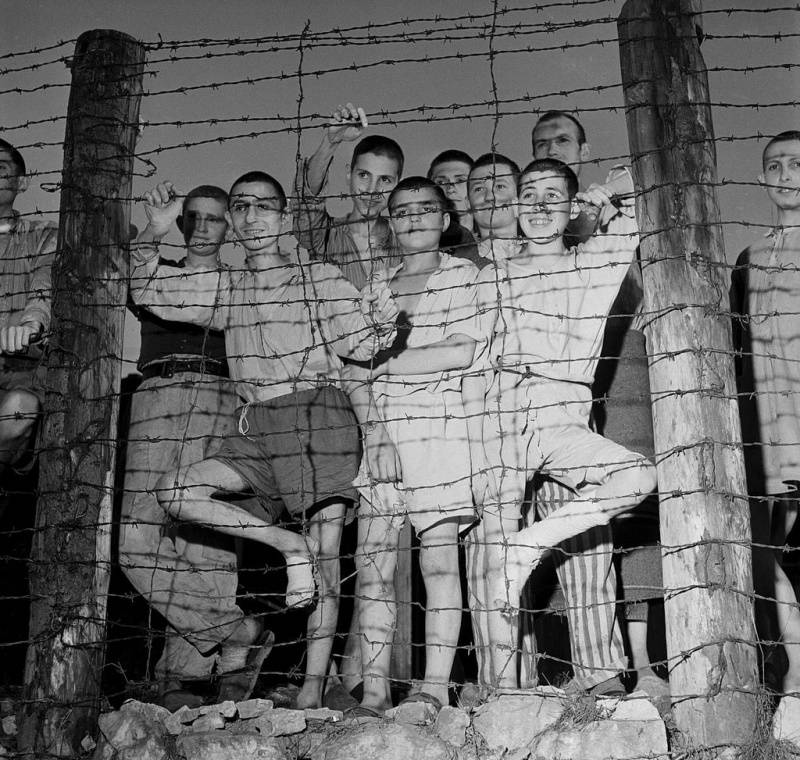
Group of prisoners of the Buchenwald concentration camp near the barbed wire after the release
4 April, American troops occupied the city of Gotha in Thuringia. After that, the 3-I American army stopped traffic in the direction of Erfurt — Buchenwald — Weimar. Nikolai Simakov, on behalf of the Soviet organization, offered to start the uprising. He was supported by the Czechs and the French. But in general, the committee rejected this proposal. I decided to wait for a more favorable situation, when the number of guards will decrease. 6 April 1945 Mr. Simakov again offered to rise. The ILK Underground Center rejected the offer.
On April 4, the camp commandant ordered all Jews to gather at Appellplatz (roll callout). The order is not fulfilled. Senior camp Hans Weiden told the SS that because of the arrivals from the external teams in the Buchenwald camp there is such a chaos that it is impossible to determine who is a Jew and who is not. The commandant of Buchenwald ordered for 5 April to prepare lists of all Jewish prisoners in the barracks. Older barracks did not fulfill the order. Then the SS men themselves began to seek out the Jews. Some of them hid. By nightfall, the Germans had assembled 3-4 thousand people in DAV (German weapons factory). In the chaos, many were able to escape, so about 1,5 thousand people were sent to transport. At the same time, the Germans prepared a list of 46 camp functionaries and ordered them in the morning to be in front of the gate. The SS decided to eliminate them as instigators of resistance. The committee decided not to extradite them, but to hide them. If the SS tried to take at least one of them by force, it was decided to resist.
From that moment, open resistance began. Orders of the German camp leadership did not comply. The night of 5 on 6 on April 1945 was the beginning of the open preparation of the uprising in Buchenwald. About the committee learned the whole camp. On the morning of April 6, the commandant ordered the senior barracks to appear at the gate. The elders of the barracks declared that the prisoners from the list had disappeared (they were hidden). Then the commandant called the campers (the intra-camp security of the prisoners). But they could not do anything. The SS men and dogs combed the camp, but found no one. At the same time there was no terror against the prisoners. The fear of the leadership of the camp had an effect, the war was nearing its end, and the Nazis understood this. At the same time, the Germans began the evacuation of the camp, and from 5 to 10 on April, they forcibly took out about 28 thousand prisoners.
On the night of 7 on 8, April, the military organization of the underground workers was put on alert. On April 8, the Camp Committee, using an underground radio transmitter, sent a message to American forces: “To Allied Forces. Army General Patton. Here is the Buchenwald concentration camp. "SOS". We ask for help - the SS men want to destroy us. ” The uprising was planned to be raised on the night of 8 on 9 of April. But then the committee postponed the beginning of the uprising, since there were many Wehrmacht field forces and SS troops near Buchenwald.
10 April camp leadership evacuated Soviet prisoners of war. The military organization of the underground has lost its shock core - 450 Soviet prisoners of war. Almost all members of the Polish military organization were under evacuation. However, Soviet prisoners of war were able to hand over to the Soviet civil underground organization all the caches of weapons and supplies. S. Baklanov handed over command to I. Smirnov.
On April 11, the situation escalated. An American camp appeared tank patrol (though he passed by). Participants in battle groups took up their initial positions, distributed weapons. At 12.10 the SS received an order to leave the camp. However, the SS men controlled 23 watchtowers and took up positions in the forest around the camp. Rumors circulated in the camp that the SS men had received orders to destroy Buchenwald. Suddenly a siren howled piercingly - it was a signal for an uprising. Command: “Forward!”, And the mass of prisoners sets in motion.
Armed prisoners from the first echelon opened fire on the towers and windows. A detachment of Smirnov rushed to the attack. In the barrier made passages. SS fled. The second echelon of the rebels rushed forward, who had almost no weapons. Prisoners broke into the barracks number XXUMX, where weapons and ammunition are stored. As a result, the rebels seized warehouses, the premises of the commandant's office and other buildings. Took all-round defense. K 14 hour. Buchenwald was taken, 15 thousand prisoners became free. April 21 appeared Americans.
The system of concentration camps in Germany was eliminated, convicted in the verdict of the International Military Tribunal in Nuremberg as a crime against humanity. The day of the uprising of prisoners of Buchenwald was adopted by the UN as the date when the planet celebrates the International Day for the Liberation of Prisoners of Fascist concentration camps.
International Day of the liberation of prisoners of fascist concentration camps around the world is celebrated with commemorative events, commemoration of the dead, worship of their memory, laying flowers at the graves and burial places of victims of Nazism and fascism.
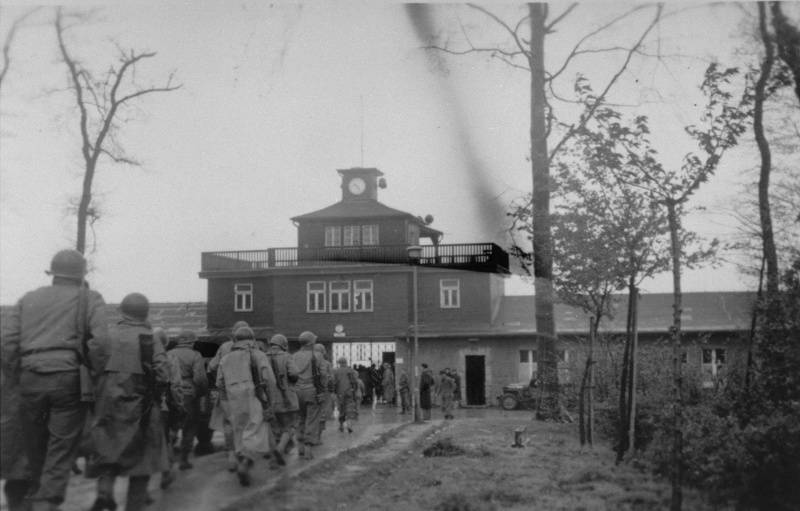
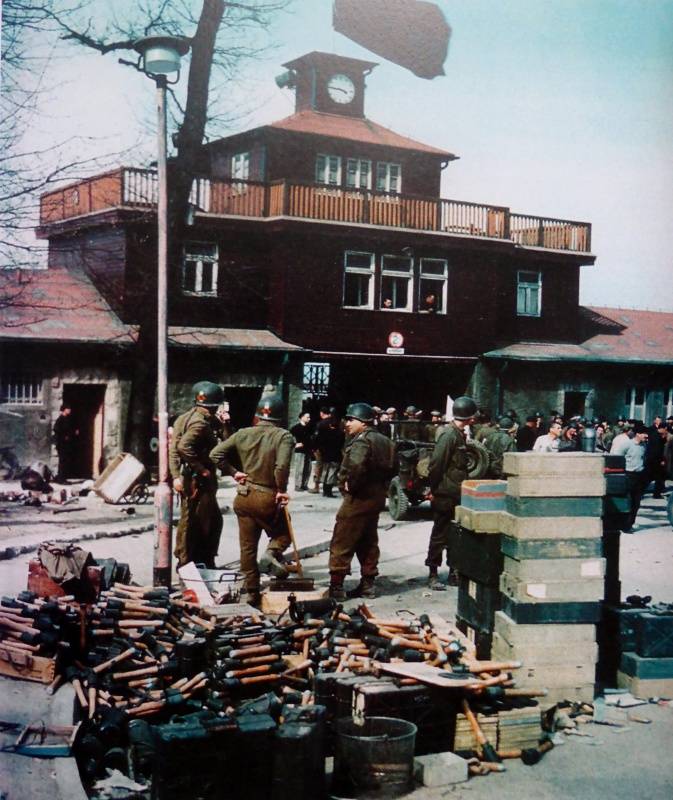
Information